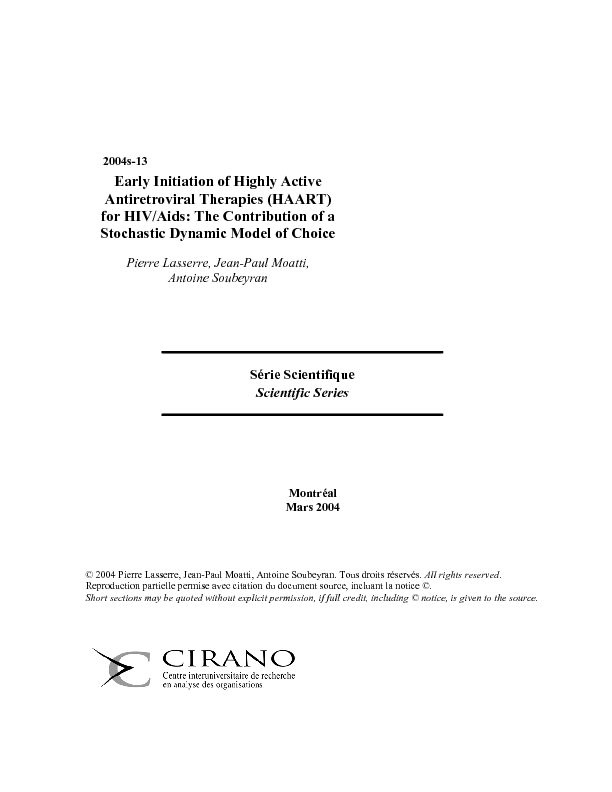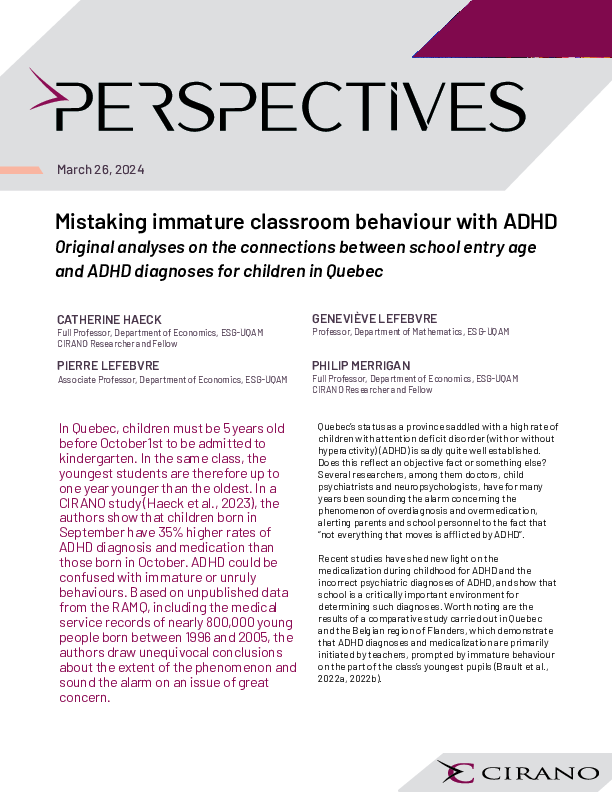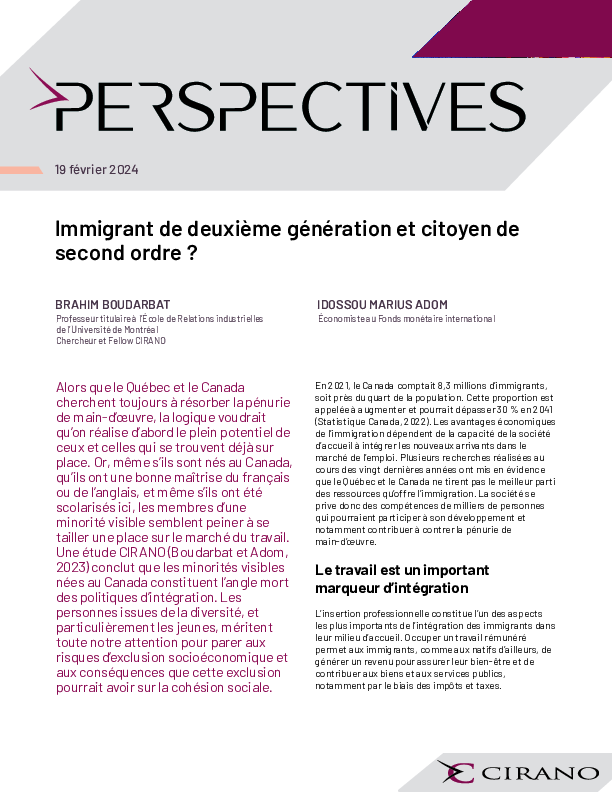Early Initiation of Highly Active Antiretroviral Therapies (HAART) for HIV/aids: The Contribution of a Stochastic Dynamic Model of Choice
Criteria for initiation of highly active antiretroviral treatments (HAART) in HIV-infected patients remain a matter of debate world-wide because short-term benefits have to be balanced with costs of these therapies, and restrictions placed on future treatment options if resistant viral strains develop. In order to take into account irreversibility and inertia effects associated with ex ante choices, we propose a simple stochastic dynamic model of sequential therapeutic choice with intermediary revelation of information, in which the efficiency gains from a new effective Therapy in second period are conditional on the results of the treatment in the previous period. We find that identical patients may be administered different treatments at the optimum; for parameters implying an all or nothing cut decision in period 2, a more forward looking decision rule is required in period 1 because there will be little space for adjustment to its consequences. Another finding is that as soon as risks of resistance due to therapeutic failure of initial treatments are significant, as perhaps in developing countries and in marginalized groups of developed countries, differences in the estimation of this risk should not influence the optimal decision about the size of the HIV-infected population eligible for early antiretroviral Therapy. The decision should then be based on pure efficiency/cost considerations.
[ - ]




